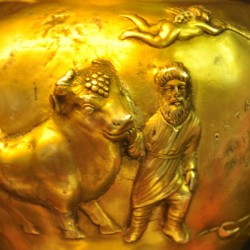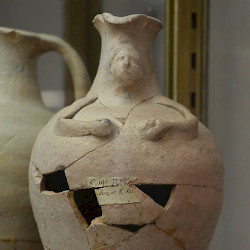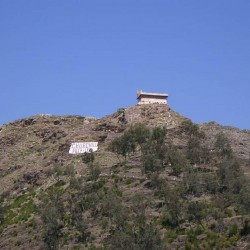Jona Lendering
Jona Lendering read history at Leiden University (MA 1993), specialized in Mediterranean culture at the Amsterdam Free University (MA 1996), and worked at excavations in Holland (Riethoven) and Greece (Halos). After teaching historical theory and ancient history at the Free University for several years, he was one of the founders of a school for history teaching, Livius Onderwijs. Born in Amsterdam, it has now spread to auxiliary locations in Bussum, Dronten, Gouda, Haarlem, Hoorn, Schagen, Zaanstad, and Zoetermeer. As of 2013, Livius Onderwijs has eight teachers, about 500-600 students a year, and offers tours to countries like Italy, Turkey, Iran, and Lebanon. The field trips help to etch into the students' minds some of what they've learned at the school.
Because history is for a large part telling a story, something you do best in your own language, Lendering prefers to publish in Dutch journals. However, he has contributed to the Bryn Mawr Classical Review and Ancient Warfare, while he is the founder of Ancient History Magazine. He is also the publisher and editor of the on-line publication of the Babylonian Chronicles of the Hellenistic Period, a set of important cuneiform sources for the history of the Seleucid and Parthian Near East, transcribed, translated and commented on by Bert van der Spek of the Free University Amsterdam and Irving Finkel of the British Museum. A publication as book is in preparation.
Lendering has written several books and maintains a blog in Dutch. He is the author of several books, including Edge of Empire and Consensus and Crises. For the Livius website, which has received several awards, he collaborates closely with Bill Thayer of LacusCurtius. Lendering is also the webmaster of two daily blogs, the MainzerBeobachter.com and Grondslagen.net.
There are 9380 items in Jona Lendering:
Chosroes II
Chosroes II: Armenian leader (second half third century CE), member of the Arsacid dynasty.Chosroes II is mentioned by the Armenian historian Agathangelos as king of Armenia and as father of Tiridates III. This would place him before 287 CE and makes him plausibly…"Chosroes"
"Chosroes": modern name of a king of Armenia (r. c.195-c.216 CE). Portrait of a Roman, c.200 CE In the 195 CE, the Roman emperor…Christianity
ChristianityChronology
De Bruijn's Travels 1674 The Hague, Hannover, Leipzig, Vienna, Venice, Florence, Rome 1675 Rome 1676 Rome 1677 Rome, Naples, Siena, Florence, Leghorn 1678 Leghorn, Stromboli, Messina, Cythera, Melos, Chios, Smyrna, Ephesus, Constantinople 1679 Constantinople 1680 Troy, Mytilene, Smyrna 1681 Smyrna, Chios, Kos, Rhodes, Tyre, Damietta, Cairo, Alexandria, Cairo, Damietta, Jaffa, Ramla, Jerusalem, Ramla 1682 Jaffa, Tripoli, Lebanon, Tripoli,…Chronology
Peloponnesian War: name of the conflict between Athens and Sparta that broke out in 431 and continued, with an interruption, until 404. Athens was forced to dismantle its empire. The war however, was not decisive, because within a decade, the…Chronology of the Diadochi
Diadochi ("successors"): name of the first generation of military and political leaders after the death of the Macedonian king and conqueror Alexander the Great in 323 BCE. To settle the question whether his empire should disintegrate or survive as a unity,…Chronology of the Years 68-70
Batavian revolt: the rebellion of the Batavians (a Germanic tribe) against the Romans in 69-70 CE. After initial successes by their commander Julius Civilis, the Batavians were ultimately defeated by the Roman general Quintus Petillius Cerialis.Chronology West Italy East (*) 68 January Vindex revolts Vespasian recovers Galilee April c.5. Rebellion of…

Chryses and a sacrificial bull |

Chrysippus |
Chrysippus
Chrysippus of Soli (c.279-c.206): Cilician philosopher, second leader of the Stoa. Chrysippus Zeno of Kition was succeeded as head of the Stoic…

Chullu, Numidian oenochoe |

Churchill's Picket |